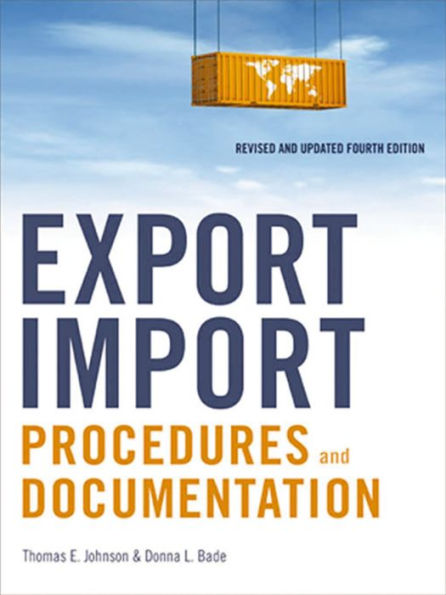Read an Excerpt
Chapter 1
Organizing for Export and
Import Operations
Smooth, efficient, and compliance-oriented (and, therefore,
profitable) exporting or importing requires that certain
personnel must have specialized knowledge. The personnel
involved and their organization vary from company to
company, and sometimes the same personnel have roles
in both exporting and importing. In small companies, one
person may perform all of the relevant functions, while in
large companies or companies with a large amount of
exports or imports, the number of personnel may be large.
In addition, as a company decides to perform in-house the
work that it previously contracted with outside companies
(such as customs brokers, freight forwarders, consultants,
packing companies, and others) to perform, the
export/import department may grow. As business increases,
specialties may develop within the department, and the
duties performed by any one person may become narrower.
A. Export Department
For many companies, the export department begins in the
sales or marketing department. That department may
develop leads or identify customers located in other
countries. Inquiries or orders may come from potential
customers through the company’s web site where the
destination is not identified. When such orders come
in, the salespeople need to determine what steps are
different from its domestic sales in order to fill those export
orders. Often the exporter’s first foreign sales are to
Canada or Mexico. Because the export order may require
special procedures in manufacturing, credit checking,
insuring, packing, shipping, and collection, it is likely that
a number of people within the company will have input
on the appropriate way to fill the order. As export orders
increase (for example, as a result of an overseas distributor
having been appointed or through an expansion of Internet
sales), the handling of such orders should become more
routine and the assignment of the special procedures
related to an export sale should be given to specific
personnel. It will be necessary to interface with freight
forwarders, couriers, banks, packing companies, steamship
lines, airlines, translators, government agencies, domestic
transportation companies, and attorneys. Because most
manufacturers have personnel who must interface with
domestic transportation companies (traffic or logistics
department), often additional personnel will be assigned to
that department to manage export shipments and interface
with other outside services. Some of this interface, such
as with packing companies and steamship lines, and
possibly government agencies and banks, may be handled
by a freight forwarder. The number of personnel needed
and the assignment of responsibilities depend upon the
size of the company and the volume of exports involved.
A chart for a company with a large export department is
shown in Figure 1–1. The way in which an export order
is processed at the time of quotation, order entry, shipment,
and collection is shown in Figures 1–2, 1–3, 1–4, and 1–5,
respectively. Smaller companies will combine some of
these functions into tasks for one or more persons.
B. Import Department
A manufacturer’s import department often grows out of the
purchasing department, whose personnel have been
assigned the responsibility of procuring raw materials or
components for the manufacturing process. For importers
or trading companies that deal in finished goods, the import
department may begin as the result of being appointed as
the U.S. distributor for a foreign manufacturer or from
purchasing a product produced by a foreign manufacturer
that has U.S. sales potential. Because foreign
manufacturers often sell their products ex-factory or
FOB plant, a U.S. company that intends to import such
products must familiarize itself with ocean shipping,
insurance, U.S. Customs clearance, and other procedural
matters. Increasingly, a number of U.S. manufacturers are
moving their manufacturing operations overseas to
cheaper labor regions and importing products they
formerly manufactured in the United States. That activity
will also put them in contact with foreign freight
forwarders, U.S. customs brokers, banks, the U.S.
Customs and Border Protection, marine insurance
companies, and other service companies.
C. Combined Export and Import Departments
In many companies, some or all of the functions of the
export and import departments are combined in some way.
In smaller companies, where the volume of exports or
imports does not justify more personnel, one or two
persons may have responsibility for both export and import
procedures and documentation. As companies grow larger
or the volume of export/import business increases, these
functions tend to be separated more into export departments
and import departments. However, because both
departments may end up being in contact with some of the
same outside parties (such as banks, those freight
forwarders that are also customs brokers, or domestic
transportation companies), some of these activities may
be consolidated in specific persons for both export and
import, while other personnel will work exclusively on
exports or on imports. A diagram of the interrelationships
between the export and import personnel in the
company and outside service providers is shown in
Figure 1–6.



